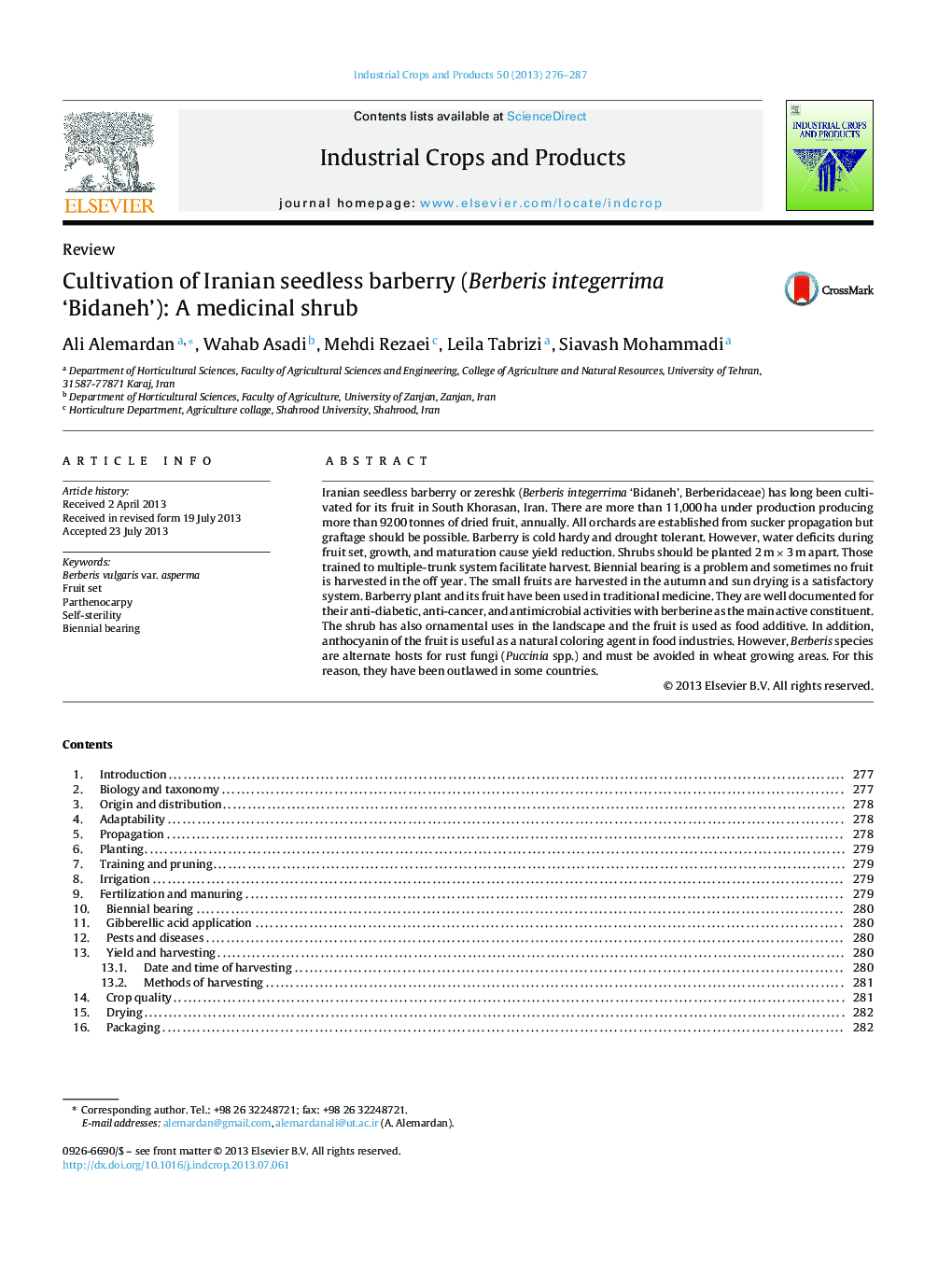| Article ID | Journal | Published Year | Pages | File Type |
|---|---|---|---|---|
| 6376910 | Industrial Crops and Products | 2013 | 12 Pages |
Abstract
Iranian seedless barberry or zereshk (Berberis integerrima 'Bidaneh', Berberidaceae) has long been cultivated for its fruit in South Khorasan, Iran. There are more than 11,000 ha under production producing more than 9200 tonnes of dried fruit, annually. All orchards are established from sucker propagation but graftage should be possible. Barberry is cold hardy and drought tolerant. However, water deficits during fruit set, growth, and maturation cause yield reduction. Shrubs should be planted 2 m Ã 3 m apart. Those trained to multiple-trunk system facilitate harvest. Biennial bearing is a problem and sometimes no fruit is harvested in the off year. The small fruits are harvested in the autumn and sun drying is a satisfactory system. Barberry plant and its fruit have been used in traditional medicine. They are well documented for their anti-diabetic, anti-cancer, and antimicrobial activities with berberine as the main active constituent. The shrub has also ornamental uses in the landscape and the fruit is used as food additive. In addition, anthocyanin of the fruit is useful as a natural coloring agent in food industries. However, Berberis species are alternate hosts for rust fungi (Puccinia spp.) and must be avoided in wheat growing areas. For this reason, they have been outlawed in some countries.
Related Topics
Life Sciences
Agricultural and Biological Sciences
Agronomy and Crop Science
Authors
Ali Alemardan, Wahab Asadi, Mehdi Rezaei, Leila Tabrizi, Siavash Mohammadi,
